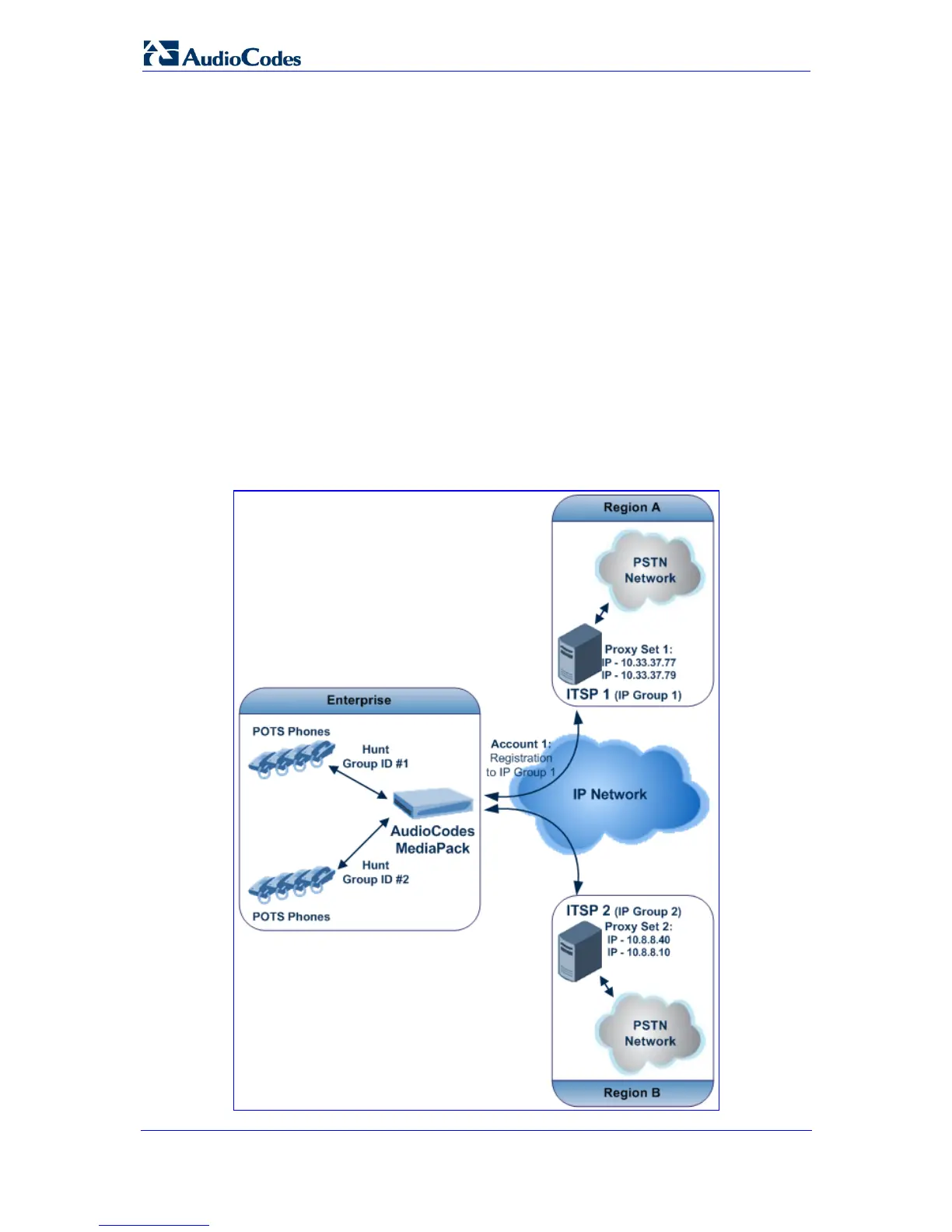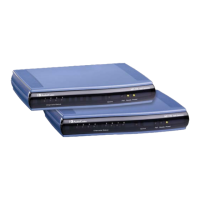SIP User's Manual 440 Document #: LTRT-65412
MP-11x & MP-124
4. Make a call. Pick up the phone connected to port #1 of the first device and dial 102 (to
the phone connected to port #2 of the same device). Listen for progress tones at the
calling phone and for the ringing tone at the called phone. Answer the called phone,
speak into the calling phone, and check the voice quality. Dial 201 from the phone
connected to port #1 of the first device; the phone connected to port #1 of the second
device rings. Answer the call and check the voice quality.
9.20 SIP Trunking between Enterprise and ITSPs
By implementing the device's enhanced and flexible routing configuration capabilities using
Proxy Sets, IP Groups, and Accounts, you can "design" complex routing schemes. This
section provides an example of an elaborate routing scheme for SIP trunking between an
Enterprise and two Internet Telephony Service Providers (ITSP), using AudioCodes' device.
Scenario: In this example, an Enterprise has deployed the 8-FXS port MediaPack. The first
four phones connected to MediaPack's FXS ports are to operate with ITSP 1 (using UDP),
while the next four phones (channels 5-8) are to operate with ITSP 2 (using TCP). ITSP 1
requires single registration (i.e., one registration for all four phones), while ITSP 2 requires
registration per phone. Each ITSP implements two servers for redundancy and load
balancing. The figure below illustrates the example setup:
Figure 9-15: Example Setup for Routing Between ITSPs and Enterprise

